| Columns Retired Columns & Blogs |
Merlin Music Systems VSM Millennium loudspeaker system Measurements
Sidebar 3: Measurements
As the Merlin VSM Millennium uses an active low-frequency equalizer to achieve its target bass performance, I first examined the Bass Augmentation Module (BAM) on the test bench. All tests were performed with the BAM powered from its internal battery.
The equalizer has unity gain at 1kHz, but applies a moderate 5dB boost at 32Hz (fig.1) to extend the VSM Millennium's low-frequency response. Its input impedance is a fairly high 39.5k ohms at 1kHz, while its output impedance is a low 100 ohms across the band, both of which optimize the unit for use in a preamp's processor or tape loop. Channel separation was excellent at 90dB at 1kHz (fig.2), but this degraded slightly to 81dB at 20kHz, due to capacitive coupling, and to 76dB at 100Hz, probably due to the finite power-supply impedance.
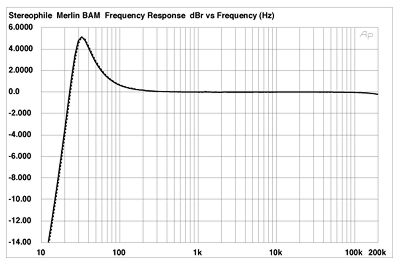
Fig.1 Merlin BAM, frequency response at 1V output into 100k ohms (2dB/vertical div., right channel dashed).
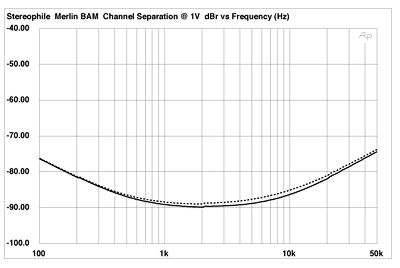
Fig.2 Merlin BAM, channel separation at 1V into 100k ohms (10dB/vertical div., R-L dashed).
Even at 3V output (about the highest level the BAM will be required to deliver), distortion and noise were very low, at just above 0.0015% across most of the band (not shown). And, as revealed by fig.3, while some individual higher-order harmonics are present, these are all very low in level. Fig.4 shows the THD+noise percentage plotted against output voltage for two loads, 100k ohms and 600 ohms. Even into the punishing 600 ohm load, the BAM doesn't clip until 8V RMS, well above the maximum it will ever be asked to deliver in real life.
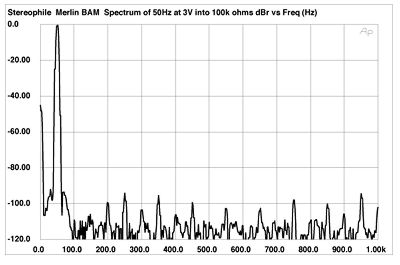
Fig.3 Merlin BAM, spectrum of 50Hz sinewave, DC-1kHz, at 3V into 100k ohms (linear frequency scale).
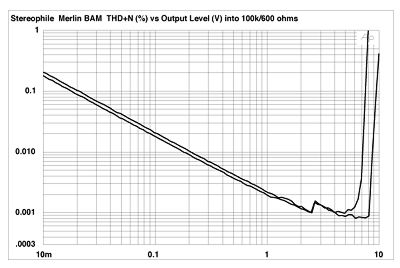
Fig.4 Merlin BAM, THD+N (%) vs output level (V) into (from bottom to top at 1V): 100k and 600 ohms.
The speaker itself was quite sensitive, at an estimated 88.5dB(B)/2.83V/m, which, in conjunction with its moderate impedance (fig.5), will make it an easy load for the partnering amplifier. If you look closely at the very-right-hand edge of fig.5, you can just see two traces diverging. The dotted trace with the very slightly lower phase angle at 50kHz is the VSM's impedance with the supplied Zobel network (0.01µF in series with 10 ohms) in parallel with the speaker terminals. The network appears to have a negligible effect on the audioband impedance magnitude and phase.
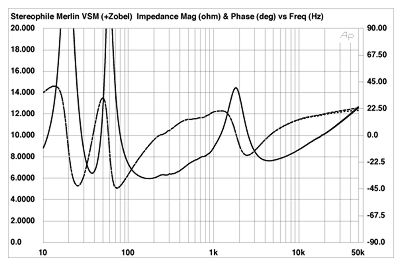
Fig.5 Merlin VSM Millennium, electrical impedance (solid) and phase (dashed) with and without Zobel network (2 ohms/vertical div.).
- Log in or register to post comments




































